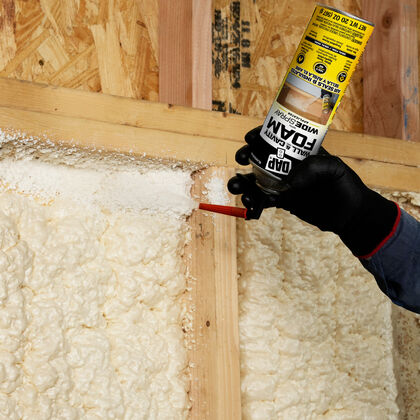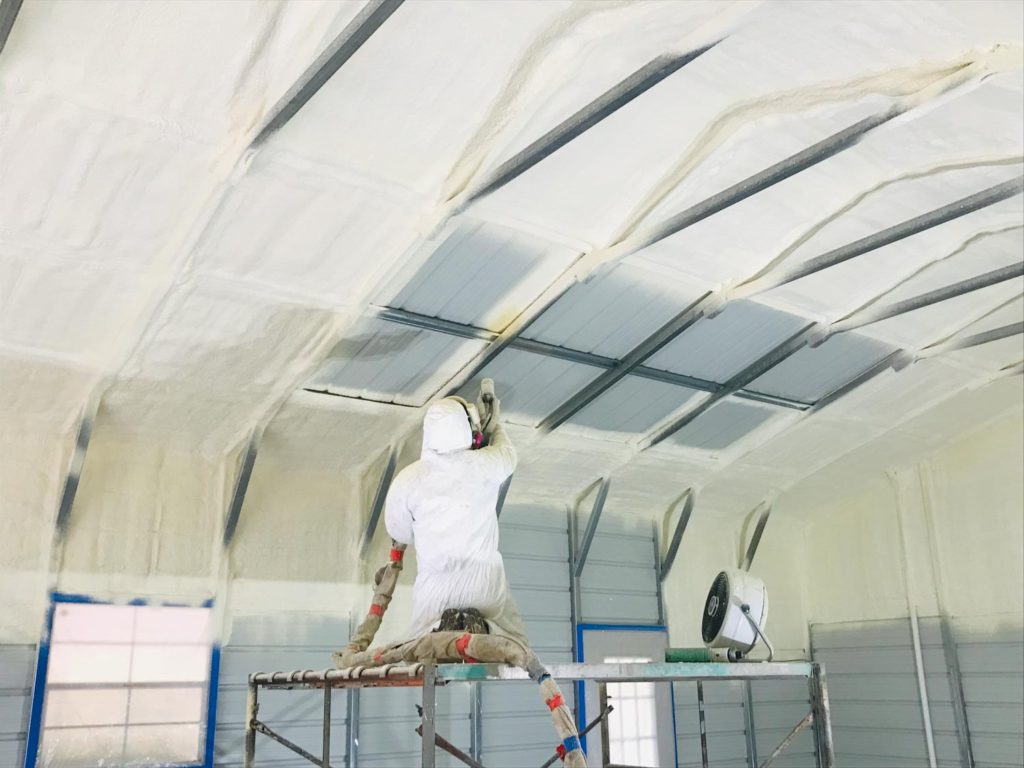Comparing Spray Foam to Traditional Insulation: Which Is Better?
Comparing Spray Foam to Traditional Insulation: Which Is Better?
Blog Article
Exactly How Spray Foam Can Enhance Energy Performance in Any Type Of Structure
Spray foam insulation has actually emerged as an essential remedy for boosting energy performance across different structure types. By producing an impermeable seal that reduces air leak, it efficiently manages indoor environments while dramatically reducing heating and cooling prices. Additionally, its outstanding R-value and moisture-resistant homes add to long-term energy financial savings and enhanced building long life. As homeowner increasingly seek sustainable options, the effects of spray foam insulation prolong beyond mere energy cost savings. The full range of its benefits, however, warrants a better assessment of exactly how it can transform energy monitoring approaches in both business and domestic settings.
Comprehending Spray Foam Insulation
Spray foam insulation is progressively acknowledged for its premium thermal efficiency and adaptability in different applications. Made up largely of polyurethane, this insulation product is used as a liquid that expands upon get in touch with, loading spaces and producing a smooth barrier. This unique home permits spray foam to satisfy uneven surface areas, making it a perfect selection for both business and domestic structures.

Application of spray foam insulation is generally executed by skilled professionals utilizing customized equipment, ensuring optimal performance and security - Spray Foam. The healing procedure is rapid, enabling quick installment and marginal interruption. As a result, spray foam insulation is increasingly being utilized in brand-new building and retrofitting tasks as a result of its ability to enhance structural integrity while boosting total power performance in buildings
Benefits of Energy Efficiency
Power performance plays a pivotal role in lowering operational costs and decreasing ecological impact throughout different fields. By maximizing energy use, property owners and companies can attain considerable cost savings on utility costs, which straight improves economic efficiency. Efficient energy intake indicates much less dependence on nonrenewable fuel sources, therefore adding to a reduction in greenhouse gas emissions and advertising a much more lasting setting.
Additionally, energy-efficient buildings often experience increased residential property worths. As power costs climb and sustainability ends up being a priority for customers, properties with boosted energy efficiency attributes are much more eye-catching on the marketplace. This pattern encourages financial investment in energy-saving technologies, which can better drive technology and economic growth.
Along with economic and environmental benefits, power performance can likewise boost the overall comfort and health and wellness of interior rooms. Proper insulation and effective heating and cooling systems aid preserve regular temperatures, lowering drafts and humidity levels, which consequently can result in far better indoor air high quality.
Eventually, the advantages of energy efficiency prolong past prompt savings, promoting a resistant economic climate, promoting environmental stewardship, and improving the top quality of life for residents in any type of structure.
How Spray Foam Works
Typically used as a fluid, spray foam expands quickly upon call with surfaces, forming a solid obstacle that properly seals splits and gaps. This distinct residential or commercial property results from its chemical make-up, mainly including isocyanates and polyols, which react when mixed to create a foam that sticks and loads gaps to numerous products, consisting of metal, concrete, and wood.
Once applied, the foam expands to several times its initial quantity, ensuring a limited seal that protects against air leak. This process considerably minimizes thermal bridging, which occurs when warmth transfers via products, bring about power loss. The foam's high R-value, an action of thermal resistance, adds to enhanced insulation by reducing heat transfer in between the interior and exterior atmospheres.
In addition, spray foam is immune to wetness and insects, better boosting its effectiveness in maintaining power effectiveness. Its application can be tailored to various locations, including attic rooms, wall surfaces, and crawl spaces, maximizing insulation throughout a building. Spray Foam. In general, the innovative style and application method of spray foam make it an effective remedy for boosting power effectiveness in any framework, resulting in lowered energy read what he said costs and an extra sustainable built setting

Applications in Different Buildings
Many applications of spray foam insulation can be found across numerous building types, enhancing energy performance and comfort. In property homes, spray foam is often used in attics and walls to create a seamless obstacle versus air leakages, substantially decreasing home heating and cooling down demands. This application is especially beneficial in older homes, where typical insulation might be poor.
In commercial buildings, spray foam insulation is related to roofing system systems and exterior wall surfaces, which aids to improve thermal performance and safeguard against moisture breach. Its light-weight nature makes it an optimal choice for retrofitting existing frameworks without including significant weight. In addition, spray foam can be used in industrial settings to protect pipelines and tank, maintaining temperature control for sensitive products.
Institutional buildings, such as schools and medical facilities, gain from spray foam insulation by guaranteeing a regular indoor climate that supports passenger comfort and health. The adaptability of spray foam allows it to adjust to various building forms and sizes, making it a preferred choice for designers and contractors looking for reliable insulation remedies. Overall, spray foam insulation functions as a critical part in accomplishing energy-efficient buildings across all markets.
Long-Term Expense Cost Savings
Spray foam insulation provides substantial lasting expense savings for structure owners and occupants by lowering power consumption and decreasing utility bills. By providing an exceptional air seal, spray foam reduces the infiltration of outside air, therefore enhancing the thermal efficiency of a structure. This causes a lot more efficient heating and cooling procedures, which can result in substantial decreases in energy prices gradually.
Along with prompt cost savings on utility expenses, the sturdiness and longevity of spray foam insulation add to its financial advantages. Unlike typical insulation products, which might sag, resolve, or weaken, spray foam keeps its efficiency for years, decreasing the need for regular replacements or fixings. This durability translates to decrease maintenance prices and less disturbance for occupants.
Additionally, buildings geared up with spray foam insulation frequently delight in a boost in residential property worth, making them a lot more appealing to possible purchasers or renters. As power effectiveness ends up being increasingly prioritized, residential or commercial properties continue reading this with efficient insulation find out this here services stand apart in the marketplace. Ultimately, the integration of spray foam insulation not only improves comfort however likewise stands for a critical financial investment that produces substantial economic advantages over the lengthy term.
Conclusion
Finally, spray foam insulation offers as an essential component in boosting energy effectiveness throughout varied building kinds. Its ability to develop a seamless obstacle against air leakage, integrated with high R-values and moisture-resistant homes, dramatically decreases power consumption and connected expenses. The implementation of spray foam not only adds to consistent indoor temperatures but likewise raises residential property worth, emphasizing its function as a sensible financial investment for both residential and commercial residential or commercial properties.
Spray foam insulation has arised as an essential option for boosting power efficiency throughout various structure types. Spray Foam. As a result, spray foam insulation is increasingly being utilized in new construction and retrofitting tasks due to its capability to boost structural honesty while boosting total energy performance in buildings
Overall, the cutting-edge design and application method of spray foam make it an efficient service for boosting energy performance in any type of framework, leading to minimized power expenses and a more lasting developed environment.
Countless applications of spray foam insulation can be located across various building kinds, enhancing energy effectiveness and convenience.In verdict, spray foam insulation offers as an important element in enhancing power performance across varied structure types.
Report this page